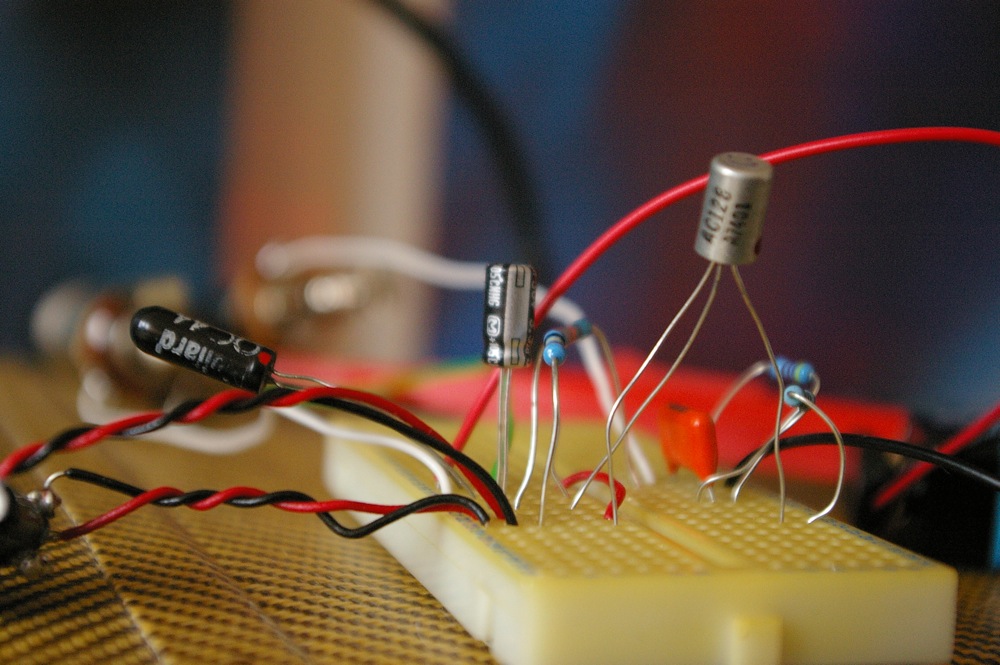With considerable help from RG Keen and Steve Daniels' FAQs, and a friend who sent me an assortment of germanium transistors.


 Of course it's a Fuzz Face. The transistors I used are just the two that tested best for leakage out of the whole lot. The OC44 has a gain of about 175, which makes for some real fiery distortion, but it does seem to clean up nicely with the guitar volume. To my ear it sounds better than with another AC128 in the front end. I was surprised to see that the AC128 is a portable radio output transistor with a rating of 1 amp, and probably a worse leakage spec than a small-signal device would have.
Of course it's a Fuzz Face. The transistors I used are just the two that tested best for leakage out of the whole lot. The OC44 has a gain of about 175, which makes for some real fiery distortion, but it does seem to clean up nicely with the guitar volume. To my ear it sounds better than with another AC128 in the front end. I was surprised to see that the AC128 is a portable radio output transistor with a rating of 1 amp, and probably a worse leakage spec than a small-signal device would have.
Comment